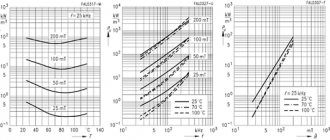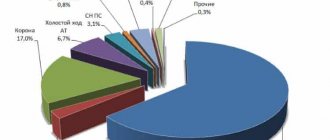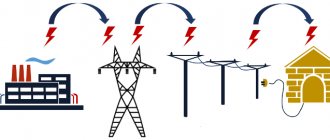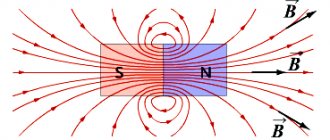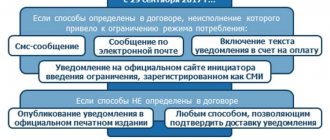Commercial component
Lack of control over the operation of metering devices leads to unaccounted for theft of electricity.
First of all, this component concerns the characteristics of metering devices belonging to end consumers (their errors, in particular). To reduce this type of loss, a number of specific measures have been developed and successfully applied in practice. The commercial category includes not only errors when issuing bills to a specific consumer, but also unaccounted for theft of electricity. In the first case, they most often arise for the following reasons:
- the contract for the supply of electricity contains incomplete or not entirely correct information about the consumer and the balance sheet of the facility assigned to him;
- error in specifying the selected tariff;
- lack of control over the operation of metering devices (this case is typical for garden cooperatives and SNT, in particular);
- inaccuracies arising when adjusting previously issued invoices, etc.
Typical errors caused by a controversial determination of the boundaries of the balance sheet of an object are resolved in the manner established by the legislation of the Russian Federation.
The problem of theft is difficult to solve in all civilized countries. These illegal actions are constantly suppressed by the relevant authorities, cases regarding them are sent to local courts. The peak of such thefts traditionally occurs in winter and precisely in those regions of the country where there are problems with centralized heat supply.
This only confirms the interconnectedness of the commercial components of costs for each category of energy resources.
How to correctly calculate electricity losses
Owners of electrified facilities began to think about energy losses during its transmission relatively recently.
At the same time, this is a fairly important parameter that should definitely be taken into account by owners of private houses, agricultural and other enterprises. To the question of how to calculate electricity losses, there is one simple answer - contact specialists. Carrying out such calculations is considered a rather labor-intensive and complex task, the implementation of which requires professionals who are familiar with the necessary formulas and who know how to use such formulas.
The concept of a standard indicator
This term refers to a practically proven and economically justified amount of losses over a certain period of time. When approving the standard, all previously discussed components are taken into account, for each of which a separate analysis is carried out. Based on their results, the actual (absolute) value is calculated and possible options for reducing this indicator are considered.
The normalized value does not remain constant all the time - it is continuously adjusted.
In this case, absolute indicators mean the difference between the power transferred to the consumer and technological (variable) losses. Standard values for the last parameter are calculated using the appropriate formulas.
Download file
In conclusion - as promised, a good book on calculating voltage loss and voltage loss in a cable.
It will be very interesting to everyone who is interested in this article. Nowadays such books are no longer written. • Karpov F. F. How to choose the cross-section of wires and cables, 1973 / Brochure from the Electrician's Library.
Provides instructions and calculations necessary for selecting cross-sections of wires and cables up to 1000 V. Useful for those who are interested in primary sources., zip, 1.57 MB, downloaded: 4539 times./ Many more books are available from me.
Own needs
Losses in substation power transformers
Own needs are usually classified as a special category, classified as actual losses. In this indicator, it is customary to record the costs of maintaining the operability of the following objects:
- substations with transformers installed in them;
- administrative buildings, auxiliary buildings, etc.
Each item is included in the total amount in the proportion normalized for a given type of consumer.
The most significant contribution is made by district substations, since they house the main service equipment. It ensures normal operating modes of the units responsible for converting electricity, as well as its delivery to the consumer.
Charging room for traction batteries
To record the value of these costs, substations install their own metering devices.
List of consumers traditionally belonging to this category:
- ventilation systems that guarantee complete cooling of a set of transformer equipment;
- heating and ventilation systems for technological premises, as well as lighting networks installed in them;
- lighting devices located in sectors and territories adjacent to substations;
- equipment of premises for battery charging;
- heating systems for outdoor installations (for controlling air switches, in particular);
- compressors and auxiliary mechanisms.
This type of equipment also includes devices and tools used for repair work, as well as for the restoration of auxiliary equipment.
Conditions for calculating electricity loss
It is easiest to calculate losses in an electrical network where only one type of wire with one cross-section is used, for example, if the facility uses only aluminum cables with a cross-section of 35 mm. In practice, systems with one type of cable are practically never found; usually, various wires are used to supply buildings and structures with electricity. In this case, to obtain accurate results, calculations should be carried out separately for individual sections and lines of the electrical system with different cables.
Losses in the electrical network at the transformer and before it are usually not taken into account, since individual meters for energy consumption are installed in the circuit after such equipment. However, if you still need to calculate losses on a power transformer, this is quite simple to do. Calculation of electricity losses in a transformer is carried out on the basis of the technical documentation of such a device, which will indicate all the parameters you need.
It should be remembered that any calculations are carried out to determine the magnitude of the maximum losses during the transmission of electricity.
When making calculations, it is worth considering that the power of the power supply network of a warehouse, manufacturing plant or other facility is sufficient to supply all consumers connected to it, that is, the system will be able to operate without overvoltage even at times of maximum load at each connected facility.
Example of a home electrical project
Back
Forward
The amount of allocated electrical power can be found out from the contract with the operating organization for the provision of such services.
The amount of losses always depends on the network power consumption. The more voltage consumed by objects, the greater the losses will be.
As an example, we can consider a small gardening association, which includes 60 properties connected through an aluminum cable to a central power line. The total length of the line is 2 km.
